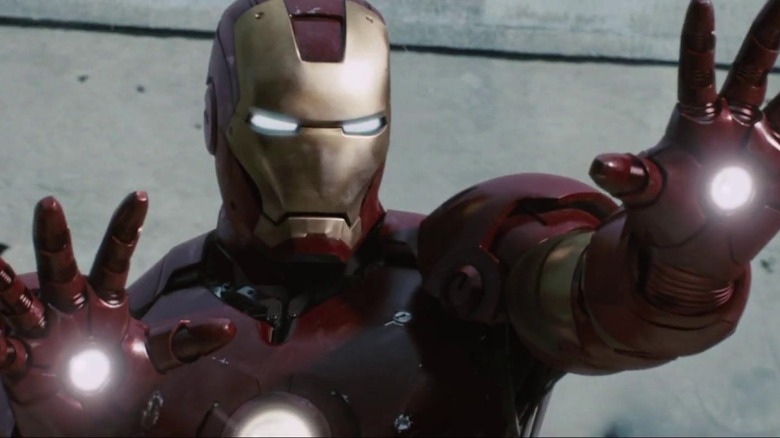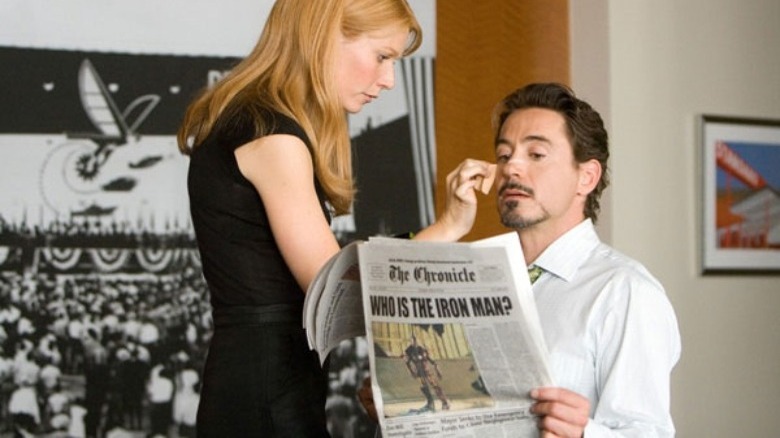The concept was abandoned a long time ago, so it’s worth pausing to remember that superheroes, for many decades, had alter egos. One of the more appealing aspects of superherodom, at least from the perspective of a youngster eager to absorb the power fantasies, was that they had secret identities. It didn’t matter who you were in real life, there was no reason to believe that you weren’t secretly a costumed vigilante by night. You can’t prove I’m not secretly Spider-Man.
Of course, by 2008, the youth’s power fantasies seem to have shifted. Kids no longer wanted a secret identity, but recognition, fame, and perhaps even wealth. Online living taught kids to sell and project themselves at all times, and the idea of having a “secret life” became unappealing. As such, when Jon Favreau made “Iron Man” in 2008, he abandoned the secret identity idea by having the title hero (Robert Downey, Jr.) announce from the jump that he was indeed the man behind the mask.
The thirty-odd sequels that followed had the heroes fighting with no masks, shouting out their real first names mid-bellum. No one had any secrets. They were all celebrities instead.
In real life, the lack of secret identities would invite lookie-loos to invade superheroes’ privacy. That doesn’t seem to be a problem that exists in the Marvel Cinematic Universe, but in real life, celebrities are hounded all the time, with paparazzi staking out their homes, hoping to get pictures. This is something Downey can attest to, often the subject of paparazzi attacks.
According to a 2008 report in the Hollywood Reporter, the makers of “Iron Man” tried to cheekily turn the tables on one of Downey’s paparazzi … by using his picture in their movie without permission.
Tony Stark, the celebrity
The Hollywood Reporter explained the drama in full. Back when “Iron Man” was still in production, a photographer named Ronnie Adams snuck onto the set and snapped off a few pictures against the studio’s wishes. When Adams posted the picture on the website IESB.net, the studio wrote a letter demanding that he remove it. Adams didn’t do it, and the internet server was forced to shut down for the better part of a day. Legally, Adams may have been within his rights — it’s legal to photograph anything that could be considered “public” — but it was certainly a dick move.
But the filmmakers soon came up with a way to annoy Adams back. In a scene near the end of “Iron Man,” a fake newspaper clipping appears on-screen with the headline “Who Is The Iron Man?” next to a photo of Tony Stark. The photo was allegedly one of the pictures Adams took from the set.
Adams was not amused, having recognized his picture right away. He immediately sued Paramount for using the picture without his permission and, as he claims, even removing his personal photographic watermark. Adams alleges that not only did his picture turn up in “Iron Man,” but that it was also used in a lot of the film’s press materials. He was not credited, nor was he compensated. He demanded that “Iron Man” be blocked from being released on DVD, that the then-upcoming “Iron Man” video game be halted, and, of course, that he be paid $5 million in damages.
The results of the trial are unknown, and one can only assume that a settlement had been made. Regardless, the makers of “Iron Man” made their point; please don’t sneak pictures from the set, and we won’t use them without permission.




